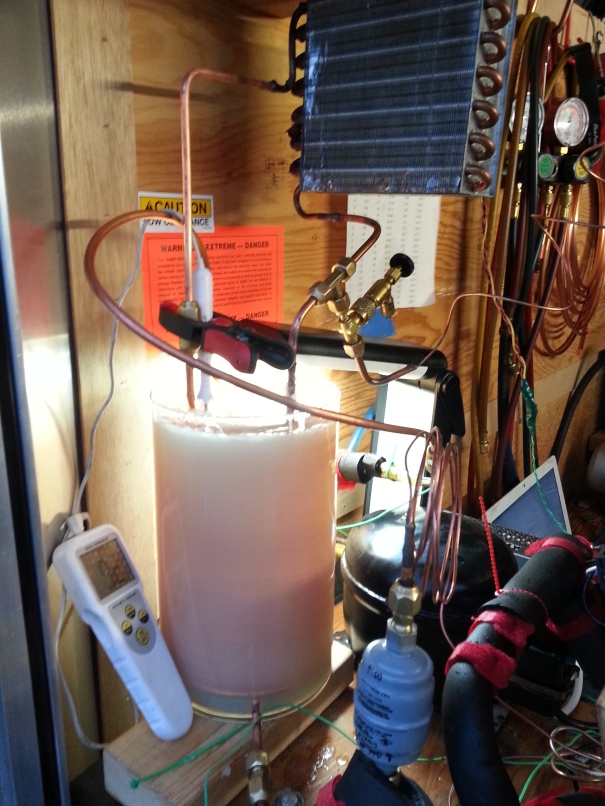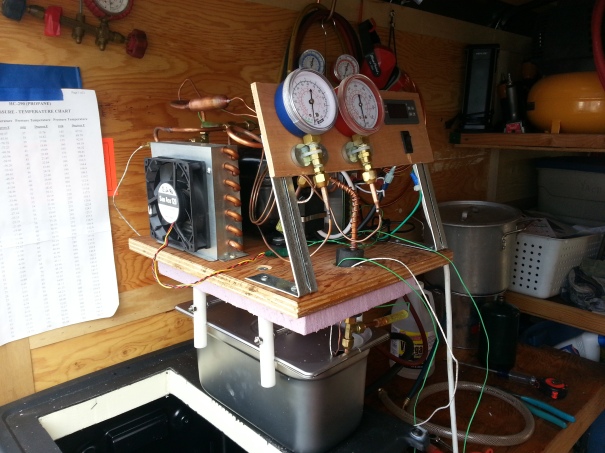Now that we’ve covered the desire to build a well insulated refrigerator and freezer, as well as the advantages associated with living in a cold climate where ice can be produced passively, it’s time to move on to the detail of what a refrigerator system might just look like, and talk abut ways in which the idea can be expanded to improve the performance of actively powered freezers.
Two-Phase Thermosiphons (TPTS)
First, we have to talk about the operation and principles of a TPTS, and the difference with a Heat Pipe. Both of these devices are forms of heat conductors. Heat naturally flows from regions of a higher temperature to regions of a lower temperature. Metals are a common choice for this- copper and aluminum being two of the more commonly selected, although other metals can be used depending on the environmental conditions present. Metals are well known as effective conductors of heat, but the larger the distance between the heat source and heat sink, the larger the temperature difference necessary in order to conduct a given heat load. Many applications, such as the cooling of integrated computer chips, require the lowest temperatures practicable at the source of heat, and the distance to the heat sink can be a few centimeters, to even more than a meter away. Metals alone are not always suitable, so other methods have been developed.
Counterflow TPTS
A sealed metal pipe (assumed copper from here on out) containing a a volatile refrigerant at saturation, can conduct heat far better than the metal alone. A simple example would be a one meter copper pipe, sealed with a few grams of r134a refrigerant inside. In a slightly vertical orientation, heat applied to the lower end of the pipe will first be absorbed by the copper, and then conducted to the the liquid refrigerant that naturally settles there. Some of the liquid evaporates, raising the internal pressure of the pipe. Refrigerant vapor higher up in the pipe, now at a higher pressure, will warm to a temperature slightly greater than the copper walls which are cooler than are found below where the heat is applied. The copper walls absorb some latent heat, and the vapor is condensed, falling by gravity back to the bottom, where it can pick up heat and begin the process again. Localized pressure differences between the heating region and the cooling region cause vapor to move from hotter to colder areas. The more of the un-heated pipe which is exposed to the ambient air, the lower the temperature it will reach, and the lower the overall pressure the pipe will reach. If only the top few centimeters are to dissipate heat (the condenser), the middle section can be insulated, such that very limited heat is dissipated in this region (or adiabatic region). By adding additional heat exchange surface area to the condenser end, passing air or another cooling fluid across it, the heat source can be held at a lower temperature than it otherwise would without the additional design features. Also, the surface area of the heat source region (or evaporator) can be improved with added fins, and increased internal surface area- conducting heat into the liquid more effectively and with a smaller temperature difference.

The device is a Counterflow Two-Phase Thermosiphon. Two phases (vapor up and liquid down) flow in opposite directions in a common pipework. They can interact with one another, impeding smooth flow, and increasing the temperature difference (delta T) the device operates at for a given heat load and operating conditions. Gravity is essential for good operation, and is why these are sometimes referred to as Gravity Assisted Heat Pipes. They only work if the condenser region is Read more ›
















